
WASHINGTON, D.C. (December 2, 2023) – The U.S. Environmental Protection Agency (EPA) has finalized methane pollution standards for new and existing oil and gas facilities that include gas wells, compressor stations and storage tanks. These updated environmental regulations will increase required air pollution inspections at oil and gas facilities while requiring widely available control technologies that do not emit climate-warming methane gas directly to the atmosphere. Methane has 87 times the global warming potential of carbon dioxide over a 20-year time period.
Additionally, this rule will require reducing smog-causing volatile organic compound (VOC) emissions as well as air toxic emissions like the known carcinogen benzene. The rule will also include a Super-Emitter Response Program that will provide information regarding air pollution incidents, and their resolutions, to impacted communities.
Joseph Otis Minott, Clean Air Council Executive Director and Chief Counsel issued the following statement:
“President Biden and the EPA are taking meaningful action with rules that set a strong foundation for cutting methane pollution from new and existing oil and gas operations. We look forward to supporting Governor Shapiro in tailoring these rules to ensure they adequately address the concerns of Pennsylvania residents near gas operations. As the second largest producer of fossil gas in the country, Pennsylvania has an outsized responsibility to cut as much climate-warming methane emissions from the gas industry as possible and better protect the health of people living near oil and gas operations.”

In another huge win for communities threatened by proposed LNG by rail routes, the Pipeline and Hazardous Materials Safety Administration (PHMSA), suspended a controversial LNG by Rail rule this past September. PHMSA is a federal agency under the Department of Transportation that manages pipelines and the transport of hazardous materials including LNG. PHMSA had recently denied a Special Permit to transport LNG by rail from northcentral PA to South Jersey for an LNG export project in New Jersey.
PHMSA had a long-standing ban on the transport of LNG by rail, with some exemptions in specific cases. In 2020, the Trump Administration issued an Executive Order that compelled PHMSA to create a rule that broadly permitted the transport of LNG by rail– even in rail cars not designed to safely carry LNG. The Council is working with other environmental organizations, 15 states, and the Puyallup Tribe to legally challenge and void this Trump-era rule. Currently, the Council and its partners are preparing to argue their case before a federal district court . Meanwhile, the Biden Administration revoked Trump’s Executive Order, which resulted in PHMSA suspending the rule this past September. The Council and its partners now hope the district court will fully void the rule, and prevent the rule from resurrecting after the suspension lapses in 2025.
The current suspension is a significant win on the LNG by rail issue. However, LNG can still be transported by truck, and there continues to be conversation around potential LNG export projects in southeast Pennsylvania. The Council will continue working in coalition with partners and community members to fight the transport and export of LNG and for a fossil-free future.
Read our last blog on LNG by rail to learn more about Clean Air Council’s work on this campaign.

HARRISBURG, PA (November 2, 2023) – In 2020, the recommendations of Pennsylvania’s 43rd Statewide Investigating Grand Jury released a report on the systemic problems of the unconventional oil and gas industry. The Grand Jury made a series of reasonable and easy-to-implement recommendations that would better protect the health, welfare and quality of life of Pennsylvanian residents. Despite the recommendations of the Grand Jury, the Pennsylvania Legislature has done little to implement the Grand Jury recommendations.
Today, Governor Shapiro is moving forward in implementing the Grand Jury Recommendations by instructing Pennsylvania’s Department of Environmental Protection (DEP) to draft regulations to protect Pennsylvania residents and the environment from the chronic pollution emitted by the gas industry.. In today’s press event with CNX Resources, the Governor will highlight new public health and environmental protections from the gas industry. Residents throughout Pennsylvania have been demanding protections from gas infrastructure for years while the gas industry has opposed them.
The Governor has instructed the DEP to adopt regulations that will require the gas industry to disclose all the chemicals used in drilling, set stronger standards for dealing with drilling waste and assure the safety of gathering pipelines. Governor Shapiro also committed to improved standards to reduce climate-changing methane emissions from the gas industry which is a major contributor to climate change.
In Response, Joseph Otis Minott, Esq., Clean Air Council Executive Director and Chief Counsel, released the following statement:
“Clean Air Council strongly supports Governor Shapiro’s decision to move forward in implementing the commonsense public health and environmental standards recommended by the 2020 Grand Jury to better protect Pennsylvania residents from oil and gas operations. For far too long, the gas industry and too many elected leaders have shown a disregard for the harm the industry is causing to residents’ health and the environment. It is past time that our leaders adopt protections from this industry.”
“We applaud Governor Shapiro’s leadership in recognizing the need to further reduce methane pollution from the gas industry, and look forward to supporting him and the DEP in tailoring the forthcoming federal rules to ensure they address the concerns of Pennsylvania residents affected by the gas industry.”
The Council encourages the Governor to additionally propose regulations to require setbacks that better protect residents and our natural resources from harmful gas infrastructure. DEP has the legal authority, scientific evidence, and public support needed right now to adopt setback distances that prevent this infrastructure from being built too close to our homes, schools, hospitals, streams, and wetlands.
To demonstrate how the industry needs to do more, the Governor announced a partnership with the gas company CNX Resources, which agreed to disclose its chemical use and better monitor its emissions, something that residents in areas affected by fracking have been demanding for years.

This summer, Clean Air Council and partners filed a joint lawsuit against the Commonwealth of Pennsylvania, challenging a recently-passed law that blocks critical efforts to require oil and gas companies to set aside sufficient funds to plug wells. In enacting this law, the Commonwealth in essence forced state taxpayers to foot the bill to plug abandoned wells or continue to suffer the harms of leaking and dangerous abandoned oil and gas wells.
For over a hundred years, oil and gas drillers have exploited the state’s fossil fuels and then abandoned unprofitable wells without plugging them to prevent leaks. As a result, Pennsylvania is home to hundreds of thousands of unplugged, abandoned oil and gas wells that can often spew toxic gases into communities.
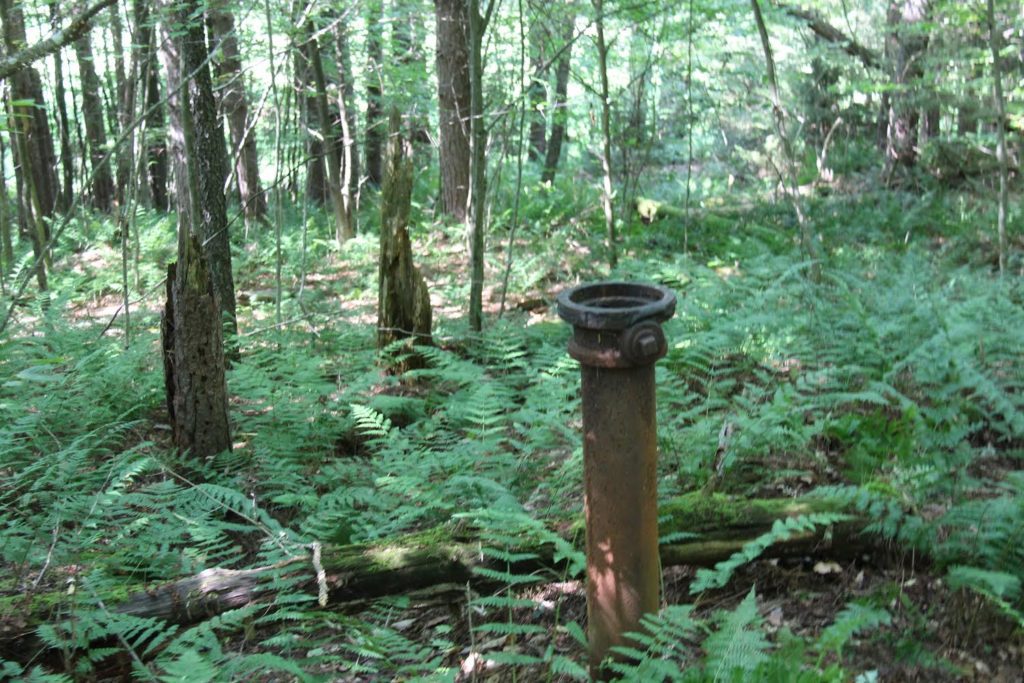
The number of these unplugged wells is only rising. The Department of Environmental Protection has found that well operators continue to routinely fail to plug wells as required by law before abandoning them: between 2017 and 2021, the DEP issued 2,246 notices of violations to “conventional” (that is, non-fracking) oil and gas operators for abandoning wells without plugging them. And the Environmental Defense Fund estimates that Pennsylvania currently has 55,000 oil and gas wells that are at immediate risk of being abandoned.
These unplugged abandoned wells are a climate disaster and pose grave risks to nearby communities. Unplugged wells leak tremendous amounts of methane—a potent greenhouse gas—into the atmosphere, accelerating climate change. In fact, the EPA estimates that methane emissions from unplugged wells in the U.S. are equivalent to the climate change impact of 2 – 5 million cars. Abandoned wells also pose a grave threat to nearby communities. Abandoned wells often leak dangerous gases into the air, including known carcinogens such as benzene. These wells can also contaminate drinking wells, groundwater, and surface water.
To reduce the number of abandoned wells, in 1985 the Commonwealth began to require drillers to post bonds for wells. Before drilling begins, a driller must set aside funds in the form of a bond. Once a well is abandoned, the operator must plug the well to retrieve the capital back from the bond. If—as often happens—the operator does not plug the well, the bond is deposited into the state’s Abandoned Well Plugging Fund and used by the state to plug wells.
However, the bonding system in Pennsylvania is currently broken. While effective in theory, these bonds only work if they are set high enough to cover the cost of plugging wells. In Pennsylvania, bonds for conventional wells are usually set at $2,500—far below the $33,000 – $800,000 per well the DEP has assessed actual plugging costs to be. As a result, it is estimated that it would cost the state $15 billion to plug all orphan and abandoned gas wells in Pennsylvania. Meanwhile, the state only has $47.2 million in bonding money available.
As a result, taxpayers are forced to bail out drillers by paying to plug wells—or continue to suffer the environmental and climate harms caused by unplugged wells.
Instead of addressing this common-sense issue, Pennsylvania has doubled down. In 2021, the Council and partners took action on this critical issue, filing petitions with state regulators to raise these bonds to the actual costs of plugging wells. However, the state legislature intervened and passed Act 96 to block state regulators from doing their job and raising bonds. This law goes against taxpayer interests by preventing state regulators from requiring bonds above $2,500—thereby allowing drillers to continue abandoning wells and leave the costs for the state.
The Council believes that this new law violates Pennsylvania’s Environmental Rights Amendment—a right to a clean environment enshrined in our Constitution. This August, the Council and partners sued the Commonwealth, seeking to restore state regulators’ authority to raise bonding amounts to levels that correspond with the actual cost to plug.
The Council will continue to fight to end this corporate welfare for the oil and gas industry to protect the health and economic wellbeing of Pennsylvania residents.

HARRISBURG, PA [August 23, 2023] — Today, PennFuture, the Sierra Club, Clean Air Council, Protect Penn-Trafford, and Earthworks filed a joint lawsuit against the Commonwealth of Pennsylvania, including Governor Josh Shapiro and the General Assembly, challenging the constitutionality of a law that prevents the Commonwealth from protecting communities from the harm caused by abandoned methane wells.
Thousands of abandoned, unplugged wells in Pennsylvania leak methane and other harmful chemicals into the air and water, harming public health and worsening the climate crisis. They mar communities, reduce property values, and depress the local tax base. They are also at risk of explosion.
The Commonwealth has the ability to require oil and gas companies to pay a bond to ensure that these wells don’t go abandoned and unplugged. But in 2022, the Pennsylvania legislature passed Act 96, which removed the Pennsylvania Environmental Quality Board (EQB)’s authority to adjust well bonding amounts and capped the amount for conventional wells at just $2,500 per well.
“When it passed Act 96, the Pennsylvania legislature tied the hands of regulators, blocking them from making common-sense changes to bonding requirements that would speed up plugging of these wells,” said Kelsey Krepps, Sierra Club’s Senior Field Organizer. “This lawsuit asks the court to rule Act 96 unconstitutional under the Environmental Rights Amendment, clearing the way for regulators to adopt policies that keep cleanup costs where they belong: with the operators who profit from these wells, not the communities who have to live with ongoing pollution from abandoned wells.”
Well bond amounts — the money drilling companies have to put aside for cleanup and plugging before being allowed to drill a new well — no longer cover the costs of closing a well, which means if an oil or gas company goes out of business and abandons their wells, the cost of plugging those wells falls to Pennsylvania taxpayers.
“We’d like to see the well bonding amounts reflect the actual cost of well plugging to ensure there is no financial incentive for drillers to abandon their wells and leave taxpayers on the hook,” said PennFuture Senior Attorney Jessica O’Neill. “Sufficient bonding amounts are necessary to protect community and environmental health, as well as local economies, from the pollution that stems from abandoned and uncapped non-producing conventional gas wells.”
The Sierra Club commissioned a report by Dr. Jeremy Weber of the University of Pittsburgh to investigate the bonding amounts for well plugging and the regulatory recommendations that would influence the requests in the two rulemaking petitions. The published 2021 report found that plugging conventional wells costs at least $38,000 per well, 900% more than the General Assembly’s cap.
“If you or I were to dirty someone else’s property, the law would hold us accountable,” said Joseph Minott, Clean Air Council Executive Director and Chief Counsel. “Yet Pennsylvania’s Legislature passed a law to give gas and oil drillers a pass for doing the same thing. That’s not just wrong; it’s unconstitutional.”
“Oil and gas companies will continue to abandon wells recklessly and pollute Pennsylvania communities until our state government requires them to set aside adequate funds to clean up their mess,” said Melissa Ostroff, Earthworks Pennsylvania Policy and Field Advocate. “Current bonding requirements do not protect Pennsylvanians. The rights protected by the Pennsylvania Constitution empower and obligate the Commonwealth to prevent bad operators from walking away from the harmful pollution they leave behind.”
“The Pennsylvania Constitution charges our government with protecting our clean air and water,” said Gillian Graber, Executive Director of Protect PT. “But since they are falling short, we must hold them accountable.”
Carbon Tracker’s Asset Retirement Obligations Portal estimates that it would cost $15 billion to plug all the orphan and abandoned gas wells in Pennsylvania. But the state currently has only
$47.2 million in bonding available to plug these wells.
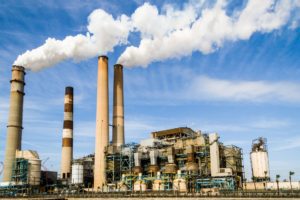
Pennsylvania has the fourth-highest energy related emissions in the country with coal and gas-fired power plants being the largest individual industrial climate polluters in the state. Producing electricity accounts for more than a fourth of Pennsylvania’s greenhouse gas emissions. For many years, Clean Air Council has been a major player in forcing power plants to reduce their emissions and suing to prevent the building of new fossil fuel plants. Not an easy thing to do in a state like Pennsylvania which has strong political support for coal and fracked gas.
The U.S. Environmental Protection Agency (EPA) recently proposed new national carbon emission standards for coal and gas-fired power plants. This new proposed rule would eliminate 617 million metric tons of total carbon dioxide (CO2) through 2042, equivalent to reducing the annual emissions of nearly half of all passenger vehicles in the United States. It is estimated it would prevent about 1,300 premature deaths, prevent more than 300,000 cases of asthma attacks, and prevent more than 800 hospital and emergency room visits each year.
The proposed new rule is a historic step in limiting the carbon emissions that fuel climate change as well as reducing other harmful chemicals emitted along with carbon dioxide. However, in order to achieve the greenhouse gas reductions needed to meet our climate goals and avoid the most catastrophic effects of the climate crisis, EPA must strengthen the proposed rule.
The rule’s suggested limits for gas-fired plants is based on the low emissions produced by using hydrogen or carbon capture and sequestration. There are many ways to produce hydrogen, including using natural gas which is very energy intensive. EPA needs to specify that only hydrogen produced with 100% renewable energy, known as green hydrogen, should be used. Hydrogen produced using natural gas will create more greenhouse gas pollution when we need to be reducing it.
EPA also needs to create strict rules around the transport and storage of captured CO2 to ensure these emissions do not leak into the atmosphere. Safe, secure, and permanent underground carbon storage has yet to be proven at commercial scale, so EPA must require that companies that generate carbon share the responsibility for ensuring these sequestered emissions don’t end up leaking into the atmosphere, and the long-term liability for any harms from future leakage.
While the rule rightly requires strong pollution standards at power plants that operate at a high amount of their full capacity, it should also include power plants that operate at less than full capacity, commonly referred to as “peaker plants.” These plants only operate during periods of high electricity demand, use highly polluting fuels like oil, and many are sited in Environmental Justice (EJ) areas that already struggle with air quality and environmental injustice.
The proposed rule has huge implications for Pennsylvania’s energy emissions. Comments are open until August 8th. The Council sent an action alert to encourage members to comment on the rule that provides talking points and we encourage you to use our digital platform to submit your comments and share the link with your friends. As part of the comment period, the Council also testified at an EPA public hearing about the rules.This is why we need you to submit a comment to the EPA about the proposed rule.
To learn more about EPA’s proposed rule, contact Advocacy Coordinator Susan Volz at svolz@cleanair.org
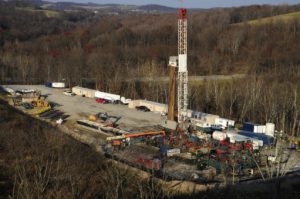
Harrisburg, PA (November 3, 2022) This afternoon, Governor Wolf signed 66 bills into law, including House Bill 1059, a roughly $2 billion tax credit package, over 90% of which goes toward supporting additional fracked gas (aka methane) extraction and combustion. A gut-and-replace amendment to HB1059 – a previously unrelated tax code bill – was introduced in the Senate Appropriations Committee on October 26th. The completely revamped legislation passed the PA Senate that afternoon and the PA House that evening. The bill provides up to $50 million annually in tax credits for manufacturing facilities located within a future Regional Hydrogen Hub that purchase and burn either methane or hydrogen (2024-2044). The bill also provides an additional $30 million annually in tax credits for petrochemical or fertilizer facilities that purchase and burn Pennsylvania methane as a feedstock (2024-2050).
Joseph Otis Minott, Esq., Executive Director and Chief Counsel of Clean Air Council, issued the following statement:
“We knew HB1059 would become law once it was presented to Governor Wolf. His administration directly negotiated this package and aggressively pushed for it to be rushed through during the last week of legislative session in Harrisburg. Even so, Clean Air Council remains deeply disappointed and alarmed. The text of this bill was publicly available for less than 12 hours before passing through both chambers in the General Assembly. There’s a reason this was negotiated in the dark.”
“Investing an additional $30 million on methane subsidies every single year through 2050 to support a petrochemical refinery boondoggle in Luzerne County is awful policy for state taxpayers and our climate. And the $1 billion investment in manufacturing facilities that burn methane inside a potential Hydrogen Hub has the potential to drive more methane and carbon pollution. The bill doesn’t even define “clean hydrogen” in a manner consistent with the U.S. Department of Energy’s proposed Clean Hydrogen Production Standard, but rather as any hydrogen that “demonstrably aids achievement” of that standard, a massive loophole. Pennsylvania must join the rest of the country in an all-out mobilization to confront the climate crisis, and billions in additional fossil fuel subsidies are simply unacceptable. The next administration needs to internalize this message and embrace a different path.”
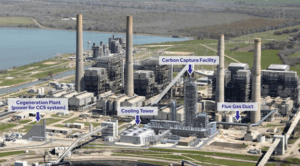
Written by Nell Cormack August 2022, edited by Katie Edwards, Robert Routh, Alex Bomstein
Supporters of hydrogen derived from fossil gas have claimed it can be a leading part of the clean energy future because of the possibility of pairing it with carbon capture and storage (CCS) technology, often referred to as carbon capture, utilization, and storage (CCUS). The fossil fuel industry advertises CCS as a way to mitigate the carbon emissions produced by burning fossil fuels to power hydrogen production.
In fact, carbon capture has been utilized by the fossil fuel industry for decades in the form of enhanced oil recovery (EOR), the process of compressing carbon dioxide to increase its density and then injecting the high-density carbon dioxide into oil reservoirs. Once injected into the reservoir, the carbon dioxide mixes with any trapped oil, which is then pumped out of the reservoir, increasing the amount of oil that can be obtained from the reservoir (and, consequently, increasing carbon emissions that result when that oil is burned). This is most commonly what companies mean when they refer to the “U” in CCUS.
While EOR has been around for quite a while, the idea of capturing carbon and storing it to reduce the impacts of climate change has only recently gained some traction among industry and governments worldwide. This idea involves capturing carbon dioxide, compressing it to a high density, transporting it, usually via pipeline, and storing it in geological formations deep underground. Carbon dioxide can be captured from emissions of industrial processes and even captured directly from the air. That direct air capture, or “carbon dioxide removal,” is in its early technological stages and is intended to be carbon negative, rather than traditional CCS which attempts to capture and reduce the amount of CO2 emitted directly from a source burning fossil fuels (making it carbon neutral, at best).
Carbon dioxide can be captured from flue gas streams with a variety of methods, but the most commonly used methods are chemical absorption, which uses a chemical solvent, and physical separation, which uses a solid surface like activated carbon to capture the carbon dioxide. After carbon dioxide has been captured, it must be transported via pipeline to a storage site.
Blue Hydrogen is Not Clean Energy
While the U.S. Department of Energy (DOE) announced in February $28 million in funding for projects involving fossil fuel-based hydrogen with CCS under the label of “clean hydrogen” (Pennsylvania will most likely seek to deploy what’s often referred to as “blue hydrogen”), it is anything but inherently clean or free from environmental risk. When carbon dioxide is transported through pipelines to storage sites, it must be transported at very low temperatures and high pressure, increasing the risk to communities and the environment surrounding the pipelines if there is a leak. A Mississippi carbon dioxide pipeline rupture in February 2020 resulted in dozens of hospitalizations and evacuations of hundreds of nearby residents. Many carbon dioxide pipelines would likely be built in marginalized communities already heavily burdened by pollution as these areas contain high concentrations of oil and gas as well as potential storage sites for carbon dioxide.
Even without the environmental risks, CCS has not proven effective at capturing carbon. As of July 2021, existing CCS facilities captured less than 1% of carbon dioxide emissions annually. Of that amount, only 19% of carbon dioxide was actually stored underground, while the remaining was used for EOR.
Additionally, hydrogen production with CCS is currently not economically viable. The Quest facility, a CCS project operated by Shell in Canada that produces hydrogen from fossil gas (sometimes referred to as “natural gas,” and which is primarily composed of methane, an extremely potent greenhouse gas), currently captures carbon at $63.70 per ton at capture rates below 85%. For capture rates above 85%, studies estimate the cost would be between $80 and $100 per ton of carbon captured. For CCS to be economically feasible, costs must be reduced to around $27 per ton by 2030, meaning cost must be reduced by over half in a few short years.
Advocates of hydrogen with CCS emphasize its potential role in hard-to-decarbonize industries like steel and cement. But in order for hydrogen with CCS to have a place in the green economy future, emphasis must be placed on increasing carbon capture efficiency while ensuring the environmental risks are minimized. If Pennsylvania becomes the site of one of the proposed regional hydrogen hubs, hydrogen would almost certainly be generated with fossil gas. The KeyState to Zero project, a proposed gas facility in Clinton County that is set to become a combined gas extraction, chemical/hydrogen production, and CCS site, expects to begin construction as early as next year. This would make it Pennsylvania’s first commercial project featuring hydrogen produced with CCS. Fossil-fuel based hydrogen is not the way to propel Pennsylvania to a cleaner, safer future. If hydrogen is to be part of the energy economy, any related lifecycle emissions must be reduced as much as possible.
Ultimately, fossil-fuel based hydrogen production with CCS runs the serious and unacceptable risk of prolonging the use of fossil fuels instead of focusing on decarbonization through the use of renewable energy sources. With blue hydrogen’s high costs, inefficiency, environmental risks, and continuation of fossil fuel reliance, investing in renewable energy sources that are becoming significantly cheaper remains the best option to reach a zero carbon future.
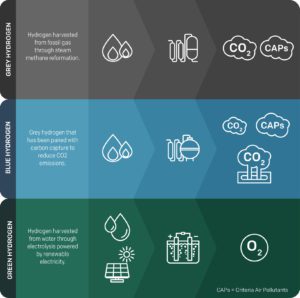
Written by Charlotte Moreno August 2022, edited by Katie Edwards, Robert Routh, Alex Bomstein
Recently, deployment of hydrogen as a fuel or energy source has become a focus for governments and industry investments both internationally (e.g., Japan, Australia, Germany) and in the US. With the global goal of net zero greenhouse gas emissions by 2050, many hypothesize that hydrogen energy will be the silver bullet to the energy transition from fossil fuels to clean energy. When burned, hydrogen does not emit greenhouse gas pollution but the different production techniques can have varying impacts as we will discuss below. The Russo-Ukrainian war has accelerated this push for clean energy to wean European and other countries off Russian oil and gas. This past June, the Biden administration publicized their intent to allocate $8 billion for the development of four regional “clean hydrogen” hubs across the country, funding which was included in the $1.2 trillion Infrastructure Investment and Jobs Act that was signed into law last November. The U.S. Department of Energy (DOE) highlights heavy-duty transportation and steel manufacturing as end-use sectors where hydrogen will assist in decarbonization. Currently companies, state and local governments, and various stakeholders are creating plans for these hubs, and DOE announced its plans to start accepting applications in September or October for funding. Given its need for industrial sector decarbonization and its substantial energy resources (particularly nuclear power and methane gas), Pennsylvania is certainly a likely region for a hydrogen hub. However, hydrogen production methods are not equal in their capacity to pollute. Knowing the differences may aid communities who face future development of hydrogen hubs in their region.
Hydrogen is the most abundant element in the universe that has potential as an energy source because of its lightweight quality and energy density. Evidence indicates that hydrogen can be used in transportation (cars, buses, trucks, airplanes, shipping), in industrial processes (steel-making, fertilizer production), and in the storage of renewable energy (to account for winter or low-wind times). The most common processes to extract hydrogen include electrolysis or steam-methane reformation which split molecules like water or methane, respectively. Hydrogen can then be pumped into a fuel cell where an electrochemical reaction occurs to create electricity. The only output is water. Developments in new processes to produce hydrogen continue to be explored.
However, we can’t talk about hydrogen without discussing the issue of how to fuel electrolysis or steam-methane reformation. Hydrogen production methods are often identified by using a color code. Methane derived from natural gas fuels the production of “gray” hydrogen through steam-methane reforming. Methane is an extremely potent climate pollutant and it leaks across all segments during its production and transportation. The process of producing hydrogen from methane also generates significant carbon dioxide pollution. Meanwhile, coal powers what’s referred to as “brown” hydrogen production, which also releases significant amounts of CO2. “Blue” hydrogen is the same as gray or brown hydrogen but adds carbon capture, utilization, and storage (CCS or CCUS), which is an effort to trap greenhouse gas emissions produced from the system and store them underground or use them to facilitate oil or gas extraction. Finally, “green” hydrogen combines renewable energy from wind or solar power with electrolysis to split hydrogen from water molecules. There are other production methods (including “pink” hydrogen produced by electrolysis via nuclear power) but the most controversial are gray, brown, and blue hydrogen because of their dependence on fossil fuels.
Not All Hydrogen is Created Equal
Clearly, not all hydrogen production methods are equal. Studies show that gray, brown, and blue hydrogen produce substantial amounts of greenhouse gas emissions. The fossil fuel industry advocates for gray, brown, and blue hydrogen because hydrogen production will continue to prop up their product and keep it marketable for years to come. Despite the benefits of burning hydrogen as a fuel source compared to fossil fuels, these production processes are anything but clean. The carbon footprint of blue hydrogen is more than 20% greater than burning methane gas or coal for heat. Additionally, 3.4% of methane, a greenhouse gas that is up to 87 times more potent than carbon dioxide at trapping heat in the atmosphere, is leaked from gas fields, storage, and transport in blue hydrogen production.
Proponents of blue hydrogen will highlight carbon capture as a way to make production cleaner. But blue hydrogen can actually be worse than gray hydrogen because more gas is required to power carbon capture, thereby producing more methane emissions. Furthermore, carbon capture projects are expensive, ineffective, and need more development. More than 80% of carbon capture projects nationwide have failed. The $1 billion project Petra Nova in Texas closed down due to mechanical problems and failure to meet carbon capture targets. In its current state of development, carbon capture cannot adequately trap target emissions from hydrogen production powered by fossil fuels. Investments in hydrogen production with low- or zero-lifecycle emissions using renewable energy are the only plausible way to combat the energy crisis effectively using hydrogen. Even so, this also involves trade-offs because we need as much renewable energy deployment as possible to generate power and clean up our electrical grid. It will be challenging to scale up the necessary amount of clean energy if we devote meaningful amounts of it to hydrogen production. Moreover, hydrogen production is incredibly energy-intensive regardless of the feedstock involved, and these energy conversions and losses mean that even green hydrogen is a much less efficient means of decarbonization when compared to, for example, direct electrification of a process using clean energy.
While there is understandable excitement for hydrogen, researchers agree that it is important to temper this enthusiasm with a realistic outlook. Hydrogen is not the one-size-fits-all fix to our energy and climate crisis and it could actually make greenhouse gas emissions worse. Hydrogen may fill a role in the energy sector, but if so, building the hydrogen infrastructure using green hydrogen or zero-emission hydrogen and targeting it to specific end-uses that otherwise cannot be electrified using clean energy will be key. Communities must keep a close eye on what the DOE and energy companies are cooking up for the hydrogen hubs which will undoubtedly shape the energy landscape for years to come.
Image credit: TANJA GEIS FOR EARTHJUSTIC, Earthjustice’s Reclaiming Hydrogen for a Renewable Future report

(Feb 07, 2022) Harrisburg, PA The start of a new year provides a unique opportunity to reflect on the past and plan for the future. 2021 was yet another stressful and difficult year for us all. COVID-19 continued to upend almost every aspect of life in America and around the world. In the United States, there seems to be increased anger and pessimism about the future.
For the last three years, I have not seen my Clean Air Council colleagues except through zoom. I really miss them. The Council continues to work remotely – the furthest remote employee is located in Montana! The Council has an amazing staff and I am so impressed by how quickly they adapted to remote work. On the other hand, it is sad how divided America was in 2021, and the bitterness between fellow Americans seems to be growing. But 2021 was also a year of optimism where long-established issues of social injustice started increasingly being addressed despite growing backlash towards change of any kind. Many Americans, businesses and nonprofits are still struggling to understand how to best move forward productively and with optimism. 2022 is a new year, and I pray that healing from the pandemic, economic downturn and our political divide can start early. It is also an election year in which I hope we all do our patriotic duty and vote.
This year will mark my 40th at the Council. At age 67, I still do not want to leave my beloved organization and its critical mission. But I also recognize that sometime in the not far future some young, eager, much more talented person will take my job and continue to grow the Council. One of the issues that the Council staff and board are working on is how to ensure a smooth transition when the time comes for me to retire.
The last few years have been hard for environmental protection. The Trump administration rolled back many of the baseline federal environmental protections that the Council worked for years to secure. At the state level, there were some victories and some defeats. In the last couple of years, Pennsylvania has seen some progress in addressing climate change, yet state elected officials continue to promote policies and subsidies that support the fossil fuel industry. The Council’s top priority is to get the United States and all 50 states to move forward in a meaningful way to address climate change. This requires getting Pennsylvania’s elected leaders to understand the great environmental and economic opportunities provided by the green economy.
The Council has had many achievements since 1967 – when the organization was first created. Today we know so much more about our environment and the devastating impacts of fossil fuel extraction and combustion, which directly fuels the climate crisis and causes devastating public health harms. We know climate change is not only real but already causing serious damage throughout the country and in many Pennsylvania communities. And yet Pennsylvania leaders at all levels of government – while paying lip service to the issue – continue to promote fossil fuel expansion.
I have some optimism that at the federal level we will see some progress in lowering greenhouse gas emissions. But those efforts will likely not be enough, nor will they reflect the amount of reductions needed in the relatively short timespan dictated by the science. In Pennsylvania, now the second largest fossil gas producer in the US, methane and other pollutants endanger the health of residents throughout the state . Meanwhile, new pipelines are tearing through our communities, and irresponsible drilling has resulted in hundreds of spills, tree clearing, seriously harming local communities, and local ecosystems. Yet the state seems to refuse to adequately penalize chronic bad polluters. The state fines them at a level that amounts to chump change for multi-billion dollar companies. Many of these companies have forfeited their social license to operate in Pennsylvania and their permits need to be revoked.
Having chosen to be an environmental advocate in Pennsylvania, I have no choice but to be an optimist. I believe 2022 will offer new opportunities to block the growing anti-environmentalism among many of our elected officials. Pennsylvanians overwhelmingly want clean air, clean water and protected open spaces. In fact, it is guaranteed in Pennsylvania’s Constitution by the Environmental Rights Amendment (ERA) and, thanks to groups like Clean Air Council and others, Pennsylvania’s Supreme Court has reinvigorated the ERA and ruled that our fundamental environmental rights are enforceable and protected by law.
We have a lot to do in the coming year and, thanks to our supporters, I am convinced we’ll make great strides. Here are the Council’s priorities for 2022:
Work with other environmental groups to overturn the Trump Administration’s rollbacks of federal environmental laws that protect public health and the environment: The Biden administration is still politically moderate but does support moving forward on addressing climate change and using good science in policy development and rule-making. It represents a sea change from the disastrous prior administration and, believe it or not, represents the most aggressive climate policy approach from any White House in history.
Ensure enforcement of rules and regulations that protect public health, quality of life and preservation of ecosystems in Pennsylvania: Pennsylvania is a state that has always been welcoming of extractive industries. Over the last few years, the General Assembly has deliberately underfunded the Department of Environmental Protection so that it cannot fulfill its constitutional obligation to protect public health and the environment through rigorous permit reviews, enforcement of existing laws and regulations, and monitoring of potential polluters.
Pennsylvanians continue to see proposals for new, gigantic gas-fired power plants and pipelines that offer no real benefits to the people of Pennsylvania and will seriously degrade the environment. Groups like Clean Air Council are left to pick up the slack. We are up to the task and are ready to support residents and local groups across the state in raising concerns about proposed fossil fuel projects. The Council has no fear of suing the DEP or any industry if needed to protect public health and the environment. The Council also willingly lends our expertise to DEP as the agency develops and proposes new regulations. Finally, the Council will continue to work with local governments throughout Pennsylvania on developing ordinances that limit where polluting sources can be sited in order to protect public health and fragile ecosystems.
Give voice to environmental justice communities impacted by pollution: It is no secret that some communities are more impacted than others when it comes to being asked to host polluting facilities. Working to bring environmental justice to these communities is a top priority of the Council. The Council’s community organizers, engineers and lawyers help residents ensure that their voices are heard. As one example, the Council’s engineers have developed accurate, low-cost air monitoring devices, designed to be loaned to communities, so concerned residents can monitor air pollution levels where they live, or where their children go to school. The Council, working with local community members, forced Sunoco to reopen its public input process to ensure that community members would have a voice in how the old refinery site should be cleaned up.
Promote the green economy: We need to rapidly shift away from using fossil fuels. The history of fossil fuel extraction in Pennsylvania has left a terrible toll on our state’s environment. I am proud that Clean Air Council is working with local governments big and small throughout Pennsylvania to support them in their move to increase energy efficiency and renewable energy in their communities. The Council will continue to fight against state and local barriers that stand in the way of expanding solar and wind power in Pennsylvania.
Reduce pollution from the transportation sector: Pollution from the transportation sector is a leading cause of air pollution and greenhouse emissions. COVID, in a perverse way, encouraged people to work from home and exercise outdoors. More people were riding bikes than ever before and enjoying the outdoors as pedestrians. As people return to work, though, they are more likely to go back to driving alone, and we will see increased pollution from the transportation sector. Even if people choose to stay remote, more people ordering packages for home delivery will increase demand for diesel fuel to transport goods in heavy-duty trucks. The Council will continue to work at the state and local level to help public transportation recover, expand bicycle and pedestrian facilities, and make it easier to get around without a single-occupancy gasoline-powered car. The Council is involved in working with policy makers and industry to build out electric vehicle infrastructure in an equitable way.
The Council depends on support from the public for all the important work we do. I love hearing feedback from our supporters on how they think the Council is doing, and about more ways we can help protect your right to a healthy environment. Please reach out to members@cleanair.org, and I will look forward to reading your feedback and suggestions!
Sincerely,
Joseph Otis Minott, Esq
Executive Director and Chief Counsel

